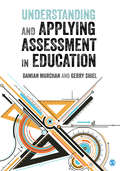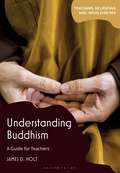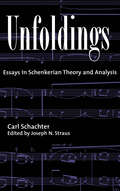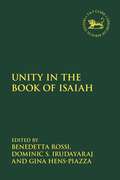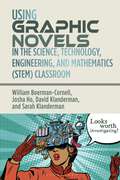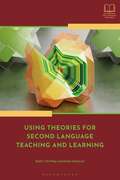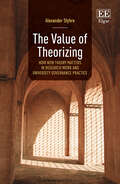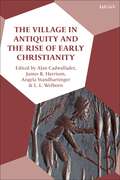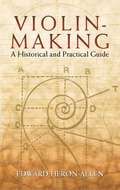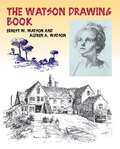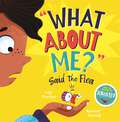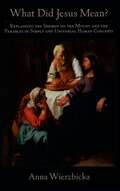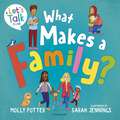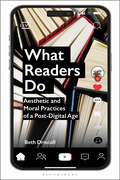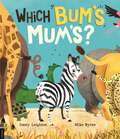- Table View
- List View
Tudor School Boy Life
by Juan Luis VivesFirst published in 1970. Routledge is an imprint of Taylor & Francis, an informa company.
Understanding and Applying Assessment in Education
by Dr Damian Murchan Dr Gerry ShielAll teachers are responsible for assessing the children they teach and the outcomes of any assessment are important for individual learners and the wider school. This book is your one-stop-shop for understanding assessment in schools. It covers formative and summative approaches used across primary and secondary education, supporting a balanced overview with policy examples drawn from the UK, Ireland and wider international contexts. Designed as a pragmatic handbook for new teachers and those training to teach, the book discusses key principles of assessment, before providing guidance on developing and carrying out assessment in the classroom, and looking at how assessment information can be used to benefit your teaching and the children you teach.
Understanding Assessment in Primary Education
by Sue FaragherUnderstanding assessment and being able to use it effectively is at the heart of successful primary teaching. Aware of current policy and research, this book looks at the role and purpose of assessment within education, as well as providing detailed practical guidance on the main types of classroom assessment, including formative, summative, formal and informal methods. Real classroom examples and activities illustrate the practical uses, benefits, and limitations of each form of assessment, enabling you to feel confident about implementing these strategies in your own teaching. Coverage includes: The assessment planning cycle Innovative forms of assessment, including portfolios, debates, role play and mind mapping Assessment of learners with diverse needs, including SEN and EAL The use of technology in assessment Engaging children through self-assessment and peer-assessment This is essential reading for all primary initial teacher education courses, including university-based (PGCE, PGDE, BA QTS, BEd), school-based (SCITT, School Direct, Teach First) and employment-based routes into teaching, and beginning teachers. Sue Faragher is Head of Al Basma British School, a large private school in Abu Dhabi.
Understanding Buddhism: A Guide for Teachers (Teaching Religions and Worldviews)
by James D. HoltBuddhism is often the religion that teachers have the least confidence in teaching despite being the sixth largest religion in the UK and being commonly regarded as one of the six major religions to be taught in schools throughout the country. This book explores the beliefs and practices of Buddhism as a lived religion in the UK. This book engages with Buddhist beliefs and practices and provides students and teachers with the confidence to address misconceptions and recognise the importance of beliefs in the lives of believers, in a way that will enable readers to go forward with confidence. Aspects of Buddhism explored include the concepts that form the central beliefs of Buddhism, and then the expression of these beliefs in worship, daily life, and the ethics of Buddhists in the modern day. Each chapter includes authentic voices of believers today and provides opportunities for the reader to consider the concepts and how they can be respected and taught and in the classroom.The book forms part of the Teaching Religions and Worldviews series of guides, each one designed to build teachers' confidence and expertise in teaching a different religion or worldview in the classroom..
Understanding the Whole Child: Prenatal Development Through Adolescence
by Jennifer Paris Antoinette Ricardo Dawn RymondThis text is a presentation of how and why children grow, develop, and learn. We will look at how we change physically over time from conception through adolescence. We examine cognitive change, or how our ability to think and remember changes over the first 20 years or so of life. And we will look at how our emotions, psychological state, and social relationships change throughout childhood and adolescence.
Unity in the Book of Isaiah (The Library of Hebrew Bible/Old Testament Studies)
Building on previous holistic readings of the Book of Isaiah, this collection approaches Isaiah through the concept of unity. Contributors outline research that point to new directions in the unity movement and, in the process, bring it under a critical gaze, considering the perennial challenges to unity reading and thus problematizing the very concept of unity.Divided into four parts, the book provides methodological reflections on reading Isaiah as a unity, and examines historical and redactional readings, literary readings and contextual or reader-orientated readings. Topics include how the figure of Jacob functions as a unifying motif in the final form of the book, Isaiah 1 as an example of the relevance of local structure for global coherence and how woman as a root metaphor of Zion not only bears revelatory significance but also serves as a theological linchpin for a more holistic reading of the book. Overall, the book highlights the continued promise of holistic readings for diverse methods and varied approaches to the Book of Isaiah.
Up From Slavery: An Autobiography
by Booker T. WashingtonHailed one of best American autobiographies ever written, Booker T. Washington recounts his life.
Using Graphic Novels in the STEM Classroom
by Professor William Boerman-Cornell Josha Ho Professor David Klanderman Dr Sarah KlandermanThis book provides everything STEM teachers need to use graphic novels in order to engage students, explain difficult concepts, and enrich learning. Drawing upon the latest educational research and over 60 years of combined teaching experience, the authors describe the multimodal affordances and constraints of each element of the STEM curriculum. Useful for new and seasoned teachers alike, the chapters provide practical guidance for teaching with graphic novels, with a section each for Science, Technology, Engineering, and Mathematics. An appendix provides nearly 100 short reviews of graphic novels arranged by topic, such as cryptography, evolution, computer coding, skyscraper design, nuclear physics, auto repair, meteorology, and human physiology, allowing the teacher to find multiple graphic novels to enhance almost any unit. These include graphic novel biographies of Stephen Hawking, Jane Goodall, Alan Turing, Rosalind Franklin, as well as popular titles such as T-Minus by Jim Ottaviani, Brooke Gladstone's The Influencing Machine, Theodoris Andropoulos's Who Killed Professor X, and Gene Yang's Secret Coders series.
Using Theories for Second Language Teaching and Learning (Bloomsbury Guidebooks for Language Teachers)
by Dale T. Griffee Professor Greta GorsuchThis book helps second language teachers use theories in their practice, exploring in concrete and practical ways the intersections between teachers, learners, and institutions, and theories of teaching, theories of learning, and theories of language. These intersections provide language teachers with critical insights on how to deal with professional complexities and practical guidance on how to develop appropriate pedagogical practice. By focusing on theories of teaching, the authors give readers the tools to create a clear image of the kind of teacher they wish to be. By exploring theories of learning, they promote the formation of teachers' personal theories which allow them to identify their own areas of special interest in learner achievement and enrichment. By examining theories of language, the book shows how administrators and teachers can use theories to identify course goals and plan priorities for class time. Using Theories for Second Language Teaching and Learning treats theory as a concept in its own right and promotes knowing theory as a means of teacher discovery, reflection, and learning through case studies, which are descriptions and analyses of teachers thinking and acting in classrooms and in the institutions in which they work. Every chapter presents case studies with examples from the teaching of different languages, including Chinese, English, French, German, and Korean. An array of theories from multiple disciplines are featured and reflective projects are offered that lead readers to discover the importance and role of theory in daily professional life.
The Value of Theorizing: How New Theory Matters in Research Work and University Governance Practice
by Alexander StyhreIn this compelling book, Alexander Styhre presents a comprehensive analysis of the role and purpose of theory within the university setting. Critiquing current university governance practices which assess research quality based on citation frequency data, Styhre proposes an alternate measure of research quality based on contentful concepts in the space of reason.Focusing on the inner workings of scholarly communities, The Value of Theorizing evaluates the ‘quality as popularity’ fallacy and highlights the importance of alternative methods of thinking. Styhre draws on American pragmatism and analytical philosophy to construct his approach, bringing together theories of instrumental and methodological pragmatism. He goes on to dissect inferentialist theory, the semantics of language, and the political economy of new theory, amalgamating these to make an invaluable contribution to this ever-changing field.Highlighting the importance of reason in assessing the quality of theory in a university setting, this innovative book will prove an intriguing read for scholars of management and the social sciences with an interest in their research environment, as well as researchers of American pragmatism, analytical philosophy and the philosophy of language. It will also appeal to scholars, policy makers and university employees who are interested in refining university governance practices and the process of research.
The Village in Antiquity and the Rise of Early Christianity
by Alan Cadwallader James R. Harrison Angela Standhartinger L. L. WelbornA complete geographical and thematic overview of the village in an antiquity and its role in the rise of Christianity. The volume begins with a “state-of-question” introduction by Thomas Robinson, assessing the interrelation of the village and city with the rise of early Christianity. Alan Cadwallader and James R. Harrison then articulate a methodology for future New Testament studies on this topic, employing a series of case studies to illustrate the methodological issues raised.From there contributors explore three areas of village life in different geographical areas, by means of a series of studies, written by experts in each discipline. They discuss the ancient near east (Egypt and Israel), mainland and Isthmian Greece, Asia Minor, and the Italian Peninsula. This geographic focus sheds light upon the villages associated with the biblical cities (Israel; Corinth; Galatia; Ephesus; Philippi; Thessalonica; Rome), including potential insights into the rural nature of the churches located there.A final section of thematic studies explores central issues of local village life (indigenous and imperial cults, funerary culture, and agricultural and economic life).
Violin-Making: A Historical and Practical Guide
by Edward Heron-AllenThis classic guide offers an accessible initiation into the mysteries of violin-making. Charming in its style and cultivated in its research, it covers every detail of the process, from wood selection to varnish. A fascinating history of the instrument precedes discussions of materials and construction techniques. More than 200 diagrams, engravings, and photographs complement the text.Author Edward Heron-Allen served an apprenticeship with Georges Chanot, a preeminent nineteenth-century violin maker. The knowledge, skill, and experience Heron-Allen acquired in the master's shop are reflected in this book, which was the first to combine the history, theory, and practice of violin-making. Originally published in 1884 as Violin-Making, As It Was and Is: Being a Historical, Theoretical and Practical Treatise on the Science and Art of Violin-Making for the Use of Violin Makers and Players, Amateur and Professional, this volume has enlightened and informed generations of performers and players alike.
The Virginia Tech Massacre: Strategies And Challenges For Improving Mental Health Policy On Campus And Beyond
by Aradhana Bela Sood Robert CohenWalkThru 5-step guides to build great teaching (USA Edition)
by Tom SherringtonThe Teaching WalkThrus series of books have sold more than 250,000 copies worldwide. Now, WalkThru creators Tom Sherrington and Oliver Caviglioli have curated a selection of essential five-step teaching techniques aimed at US schools and educators.The five-step instructional coaching guides are explained by Sherrington's concise direction and Caviglioli's signature iconography and cover all the key areas of teaching: behaviour and relationships; curriculum planning; explaining and modelling; questioning and feedback; practice and retrieval; and Mode B teaching.The featured WalkThrus have been selected from the original trilogy of books and adapted especially for the US.The WalkThrus books are supported by an online PD toolkit, which is now used by 3,000 organisations in 40 countries.
The Watson Drawing Book (Dover Art Instruction)
by Aldren A. Watson Ernest W. WatsonBoth serious students and amateurs will appreciate this guide to drawing, an ideal resource for those who want to develop their skills whether for professional reasons or simply for pleasure. Its comprehensive chapters cover all of the basic black-and-white drawing media: pencil, charcoal, pen and ink, brush and ink, quill and rush pens, felt-tip, wash, and mixed media. A showcase of technical methods allows students ample opportunity to experiment with finding their preferred approaches. Technical information includes instruction in such important basics as perspective, proportion, form analysis, light, and shade. Portrait drawing, figure sketching and outdoor sketching are also covered. In addition to the authors' sketches and studies, the text features numerous drawings in a variety of techniques by old masters as well as contemporary artists.
What About Me? Said the Flea
by Lily MurrayWhen a little girl sits down at her desk one day to write a story, she struggles to find her inspiration ... Luckily for her there’s a whole host of potential picture-book characters who want to be the star of her story and make their cases convincingly. There’s the magical, proud unicorn with sparkly hooves and a glittery horn. There are the big, burly bears hosting a picnic, the loveable llamas in pyjamas, the stylish sloth, the lion, the penguins, and even a roar-some, claw-some dinosaur …But, unnoticed by the little girl, an even littler flea is hopping and jumping around, hoping to be the one she chooses to write a story about. "What about me?" it cries.With all the big characters and commotion, will the flea ever be noticed?Set in fun, rhyming couplets, What About Me? Said the Flea celebrates the power of imagination, determination, and the good things that come in teeny tiny packages.
What Did Jesus Mean?: Explaining The Sermon On The Mount And The Parables In Simple And Universal Human Concepts
by Anna WierzbickaWhat Makes a Family?: A Let’s Talk picture book to help young children understand different types of families (Let's Talk)
by Molly PotterFrom the bestselling author of How Are You Feeling Today?, this picture book helps children understand and celebrate different types of families.What Makes a Family? explores different types of families, from what makes them unique to what they all have in common. Using everyday examples, clear explanations and colourful illustrations by Sarah Jennings, this book encourages children to celebrate families of all shapes and sizes. This diverse picture book covers lots of different family structures, including nuclear families, blended families, LGBTQ+ families, single-parent families, fostering and adoption. It's the perfect resource for starting important conversations with children about what different families can look like, and the love that holds them all together.Let's Talk books help you start meaningful conversations with your child. Written by an expert and covering topics like feelings, relationships, diversity and mental health, these comforting picture books support healthy discussion right from the start.
What Readers Do: Aesthetic and Moral Practices of a Post-Digital Age
by Dr Beth DriscollShining a spotlight on everyday readers of the 21st century, Beth Driscoll explores how contemporary readers of Anglophone fiction interact with the book industry, digital environments, and each other.We live in an era when book clubs, bibliomemoirs, Bookstagram and BookTok are as valuable to some readers as solitary reading moments. The product of nearly two decades of qualitative research into readers and reading culture, What Readers Do examines reading through three dimensions - aesthetic conduct, moral conduct, and self-care – to show how readers intertwine private and social behaviors, and both reinforce and oppose the structures of capitalism. Analyzing reading as a post-digital practice that is a synthesis of both print and digital modes and on- and offline behaviors, Driscoll presents a methodology for studying readers that connects book history, literary studies, sociology, and actor-network theory. Arguing for the vitality, agency, and creativity of readers, this book sheds light on how we read now - and on how much more readers do than just read.
What to Draw and How to Draw It
by E G LutzLearn how to draw, with a masterclass from the man who inspired Walt Disney.Credited with being the inspiration for Walt Disney to pick up a pencil and pursue a career in animation, E G Lutz's method of drawing complex illustrations in gradual, simplified stages paved the way for many of the artists and illustrators who followed him.* Learn how to draw a delightful range of subjects, from animals and people to toys, buildings and landscapes.* Pictures are broken down into simple shapes and lines, which are then built up, with the aid of clear step-by-step instructions, into beautiful drawings.* Simple to follow, yet using principles seen in sophisticated artworks and animations today, this guide can help budding artists of all ages to develop their skills.Nostalgic yet timeless, this historically and culturally important book has inspired so many adults and children to draw and can help you too to discover the delights of creating your own artwork.
Which Bum's Mum's?
by Jonny LeightonA hilarious tale of Ziggy the zebra’s journey through the savannah, and the different animal bums he encounters on his quest.When a young zebra accidentally causes a huge stampede, he finds himself lost and alone. But he knows he’ll find home again if he just looks out for his mum’s distinctive, zig-zag striped bum. Along the way, he’ll encounter big ones, small ones, spotty ones, tall ones, hairy bums, smelly bums, scaly ones and old ones, belonging to huge hippos, very tall giraffes, lazy lions and many more animals besides.Written by Jonny Leighton and illustrated by Mike Byrne, the dynamic duo behind Does a Bear Poo in the Woods?, this laugh-out-loud story book will be accompanied by very cheeky illustrations to complete the bum-tastic odyssey.
Wilderness as Metaphor for God in the Hebrew Bible
by Robert MillerThe ancient Israelite authors of the Hebrew Bible were not philosophers, so what they could not say about God in logical terms, they expressed through metaphor and imagery. To present God in His most impenetrable otherness, the image they chose was the desert. The desert was Ancient Israels southern frontier, an unknown region that was always elsewhere: from that elsewhere, God has come -- God came from the South (Hab 3:3); God, when you marched from the desert (Ps 68:8); from his southland mountain slopes (Deut 33:2). Robert Miller explores this imagery, shedding light on what the biblical authors meant by associating God with deserts to the south of Israel and Judah. Biblical authors knew of its climate, flora, and fauna, and understood this magnificent desert landscape as a fascinating place of literary paradox. This divine desert was far from lifeless, its plants and animals were tenacious, bizarre, fierce, even supernatural. The spiritual importance of the desert in a biblical context begins with the physical elements whose impact cognitive science can elucidate. Travellers and naturalists of the past two millennia have experienced this and other wildernesses, and their testimonies provide a window into Israel's experience of the desert. A prime focus is the existential experience encountered. Confronting the desert's enigmatic wildness, its melding of the known and unknown, leads naturally to spiritual experience. The books panoramic view of biblical spirituality of the desert is illustrated by the ways spiritual writers -- from Biblical Times to the Desert Fathers to German Mysticism -- have employed the images therefrom. Revelation and renewal are just two of many themes. Folklore of the Ancient Near East, and indeed elsewhere, that deals with the desert / wilderness archetype has been explored via Jungian psychology, Goethean Science, enunciative linguistics, and Hebrew philology. These philosophies contribute to this exploration of the Hebrew Bible's desert metaphor for God.
The Wind in the Willows
by Kenneth GrahameThe escapades of four animal friends who live along a river in the English countryside--Toad, Mole, Rat, and Badger.

